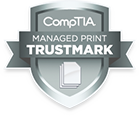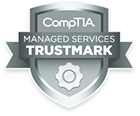With an overwhelming number of options on the market, choosing the right computer hardware for your business can feel like a daunting task. The challenge is finding the perfect balance between cost and reliability without overspending on features you don’t need. To simplify the decision-making process, here are the most important steps to take when selecting computer hardware.
Evaluate your current setup
Before making any purchases, assess your current setup. Are your existing computers struggling to handle daily operations? Are employees complaining about slow load times, crashes, or outdated software limitations? Identifying weaknesses in your current hardware will clarify what needs replacing, what can be upgraded, and what still serves its purpose.
Check for system compatibility
A seamless tech ecosystem is critical for business operations. When choosing new hardware, think about how well it integrates with your existing software, peripherals, and networking infrastructure. A top-tier workstation won’t do much good if it can’t run your specialized industry software or connect properly to your company’s printers, servers, or cloud services. Always check compatibility requirements before making a purchase, and whenever possible, opt for hardware that allows flexibility for future integrations.
Assess lifespan and warranty
No hardware lasts forever, but some machines age better than others. Business computers typically have a useful lifespan of three to five years, but that depends on usage intensity and the quality of components. Investing in hardware with a strong manufacturer’s warranty and extended support options can prevent premature replacements and costly repairs. Also, consider how easy it is to source replacement parts because proprietary or niche components can make repairs expensive and time-consuming.
Prioritize speed and performance
Processing power (CPU), memory (RAM), and storage type (HDD vs. SSD) all influence how efficiently a machine operates. While more RAM and a faster processor generally improve performance, not all roles require high-end specs. For instance, a data analyst crunching massive spreadsheets needs more computing power than an employee using basic office applications. Invest in performance where it counts to avoid unnecessary expenses on overpowered machines.
Consider mobility for remote work
With remote and hybrid work becoming the norm, mobility is a key consideration for many businesses. If employees frequently work outside the office, investing in lightweight, high-performance laptops with strong battery life is a smarter move than relying solely on desktops. Docking stations and cloud-based applications can also bridge the gap between in-office and remote setups, making collaboration seamless without sacrificing computing power.
Invest in built-in security
Modern business computers often come with built-in security features such as biometric authentication, encrypted storage, and hardware-based threat detection. These safeguards can prevent data breaches, unauthorized access, and malware infections.
When selecting hardware, prioritize security features that align with your company’s risk profile and compliance requirements. A healthcare organization, for example, might prioritize more built-in security measures since they handle sensitive patient information, while a retail business might prioritize features that protect against payment card fraud.
Balance budget and value
Spending too little on hardware can lead to sluggish performance, frequent breakdowns, and premature replacements. Overspending on high-end specs you don’t need can drain your IT budget without tangible benefits. Instead of focusing solely on price, consider long-term value. Mid-range hardware with upgrade potential often offers a better return on investment than bargain-bin deals or top-tier machines loaded with bells and whistles.
Need help choosing the right hardware for your business? Contact us today to discuss your needs and find the best solutions for your team.



